Zhaobin Liu
Improvement of Normal Estimation for PointClouds via Simplifying Surface Fitting
Apr 21, 2021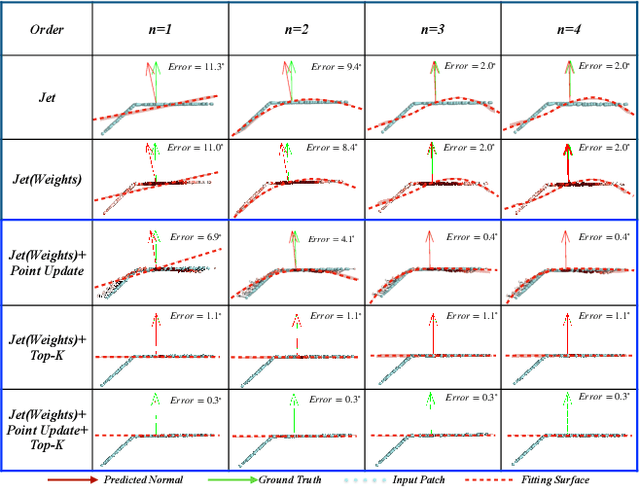

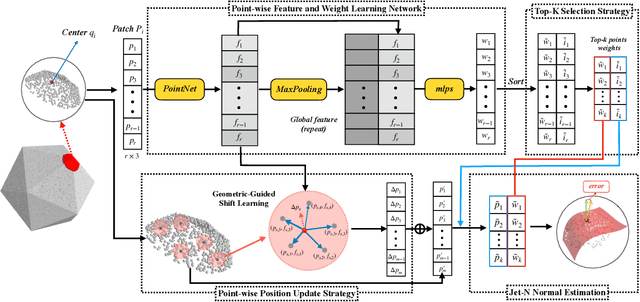
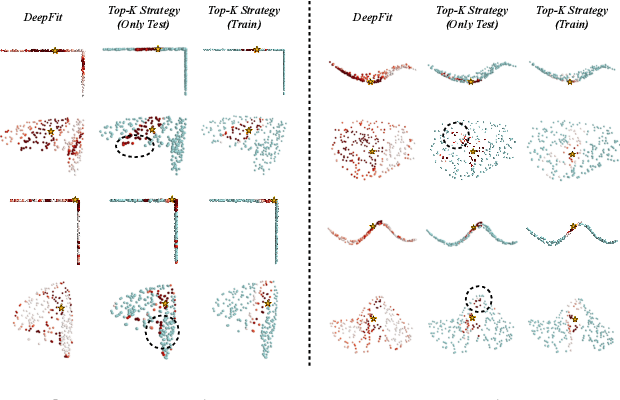
Abstract:With the burst development of neural networks in recent years, the task of normal estimation has once again become a concern. By introducing the neural networks to classic methods based on problem-specific knowledge, the adaptability of the normal estimation algorithm to noise and scale has been greatly improved. However, the compatibility between neural networks and the traditional methods has not been considered. Similar to the principle of Occam's razor, that is, the simpler is better. We observe that a more simplified process of surface fitting can significantly improve the accuracy of the normal estimation. In this paper, two simple-yet-effective strategies are proposed to address the compatibility between the neural networks and surface fitting process to improve normal estimation. Firstly, a dynamic top-k selection strategy is introduced to better focus on the most critical points of a given patch, and the points selected by our learning method tend to fit a surface by way of a simple tangent plane, which can dramatically improve the normal estimation results of patches with sharp corners or complex patterns. Then, we propose a point update strategy before local surface fitting, which smooths the sharp boundary of the patch to simplify the surface fitting process, significantly reducing the fitting distortion and improving the accuracy of the predicted point normal. The experiments analyze the effectiveness of our proposed strategies and demonstrate that our method achieves SOTA results with the advantage of higher estimation accuracy over most existed approaches.
Fast and Accurate Normal Estimation for Point Cloud via Patch Stitching
Mar 31, 2021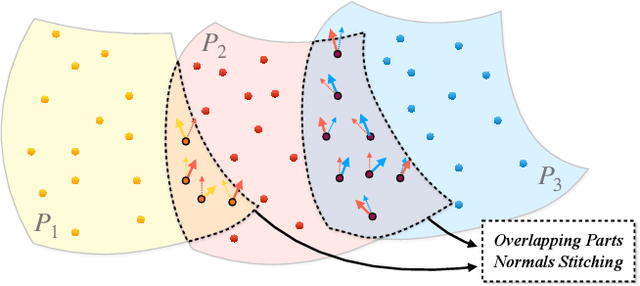
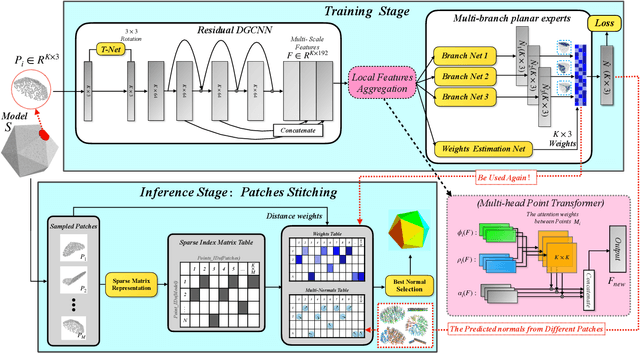

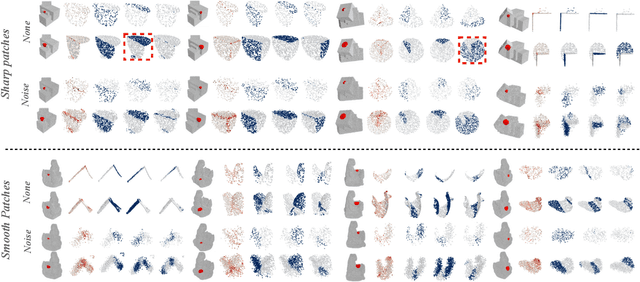
Abstract:This paper presents an effective normal estimation method adopting multi-patch stitching for an unstructured point cloud. The majority of learning-based approaches encode a local patch around each point of a whole model and estimate the normals in a point-by-point manner. In contrast, we suggest a more efficient pipeline, in which we introduce a patch-level normal estimation architecture to process a series of overlapping patches. Additionally, a multi-normal selection method based on weights, dubbed as multi-patch stitching, integrates the normals from the overlapping patches. To reduce the adverse effects of sharp corners or noise in a patch, we introduce an adaptive local feature aggregation layer to focus on an anisotropic neighborhood. We then utilize a multi-branch planar experts module to break the mutual influence between underlying piecewise surfaces in a patch. At the stitching stage, we use the learned weights of multi-branch planar experts and distance weights between points to select the best normal from the overlapping parts. Furthermore, we put forward constructing a sparse matrix representation to reduce large-scale retrieval overheads for the loop iterations dramatically. Extensive experiments demonstrate that our method achieves SOTA results with the advantage of lower computational costs and higher robustness to noise over most of the existing approaches.
 Add to Chrome
Add to Chrome Add to Firefox
Add to Firefox Add to Edge
Add to Edge